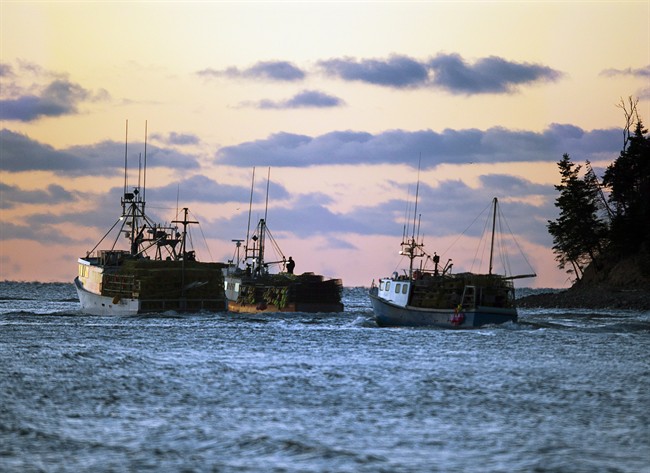Canada’s commercial fishing industry experienced only three deaths in 2017 but during the first 10 months of 2018, the number spiked to 17 fatalities — an all-time high in the industry.

It’s a piece of data that the Transportation Safety Board (TSB) of Canada says highlights the “disturbing safety record of the fishing industry.”
The figure also forms part of the TSB’s 2018 watchlist that highlights key issues that the board say requires government and industry attention in order to make the nation’s “transportation system even safer.”
The risk of collisions on the nation’s runways, runway overruns, following railway signals and employee fatigue round out this year’s watch list.
READ MORE: Safety board says commercial fishermen should be required to wear life-jackets
In particular, the TSB says that employee fatigue is a pervasive safety hazard that is found throughout the air, marine and rail industries and that fatigue has been found to be a risk or contributing factor in more than 90 TSB investigations since 1992.
“Transport Canada, operators, unions, and employees all share the responsibility for preventing and managing fatigue at work. This also calls for a profound change in attitudes and behaviours, both at the management and operational levels,” said Kathy Fox, chair of the TSB.
Commercial fishing industry

Get breaking National news
The TSB has had the commercial fishing industry on their safety watchlist since it was launched in 2010, with the board issuing 48 recommendations to the industry in order to address safety deficiencies, 13 of which have yet to be implemented.
The board says that despite a multi-year campaign to implement safety initiatives in the industry — including the use of lifesaving equipment such as personal flotation devices and emergency signals — the number of deaths in commercial fishing fluctuates from year-to-year without any downward trend.
The TSB says its safety campaigns and investigations have resulted in a behavioural change among fish harvesters who have begun to adopt the use of flotation devices and other emergency devices.
However, the board concludes that a concerted effort is needed form the federal government and the provinces in order to co-ordinate regulatory oversight and eliminate gaps in coverage.
Until that happens the TSB says the industry will remain on their watchlist.
WATCH: Air Canada’s near miss could’ve been a massive disaster, say officials

Aviation safety
The TSB says aviation safety is in need of attention by Transport Canada and the industry as the result of a sustained number of runway incursions at Canadian airports, which occur when an aircraft or vehicle occupies an active runway.
Between 2013 and 2017 there were an average of 445 runway incursions each year. Although the majority of them posed little to no risk, the TSB says that there were 21 high-severity events in each of the past two years.
Although there have been no recent accidents as the result of a runway incursion, the TSB says the potential consequences of a collision are “catastrophic.”
“If more aggressive hazard identification and mitigation strategies are not implemented by the aviation industry, the risk of collisions from runway incursions will remain,” the TSB says in its report.
Runway overruns also remain a point of concern for the safety board, which says an average of nine overrun incidents has occurred annually since 2013.
Canada currently has no requirement for its runways to meet international standards. Although Transport Canada says a risk assessment has been carried out, the agency believes more efforts are necessary.
READ MORE: Transportation Safety Board figures show rise in serious rail, pipeline accidents in 2017
Railway signage
The TSB has slammed Transport Canada and the railway industry for their “insufficient progress” on safety recommendations that have been implemented in the United States and in Europe.
In particular, the TSB highlights Canada’s failure to improve its system of railway signals, which it says can be misinterpreted or misunderstood by train operators.
According to the TSB, there have been an average of 33 incidents a year in which train crews didn’t respond to the signal. Although the probability of the issue leading to an accident is low, the board says a train collision or derailment could have “catastrophic consequences” for people, property or the environment.




Comments